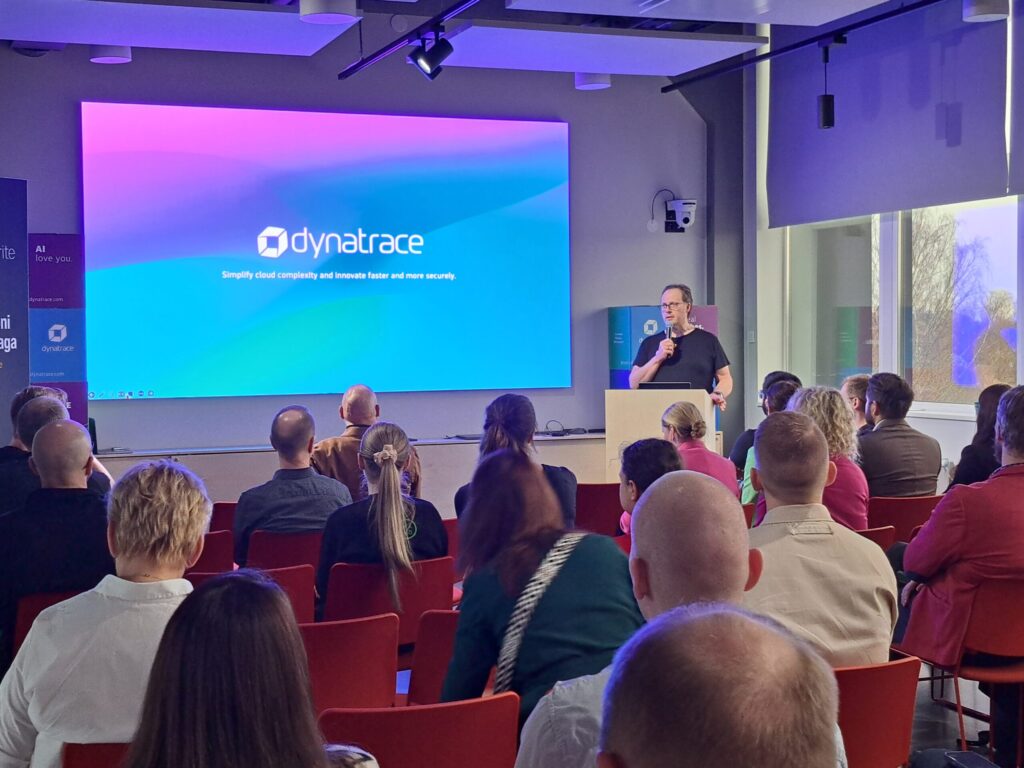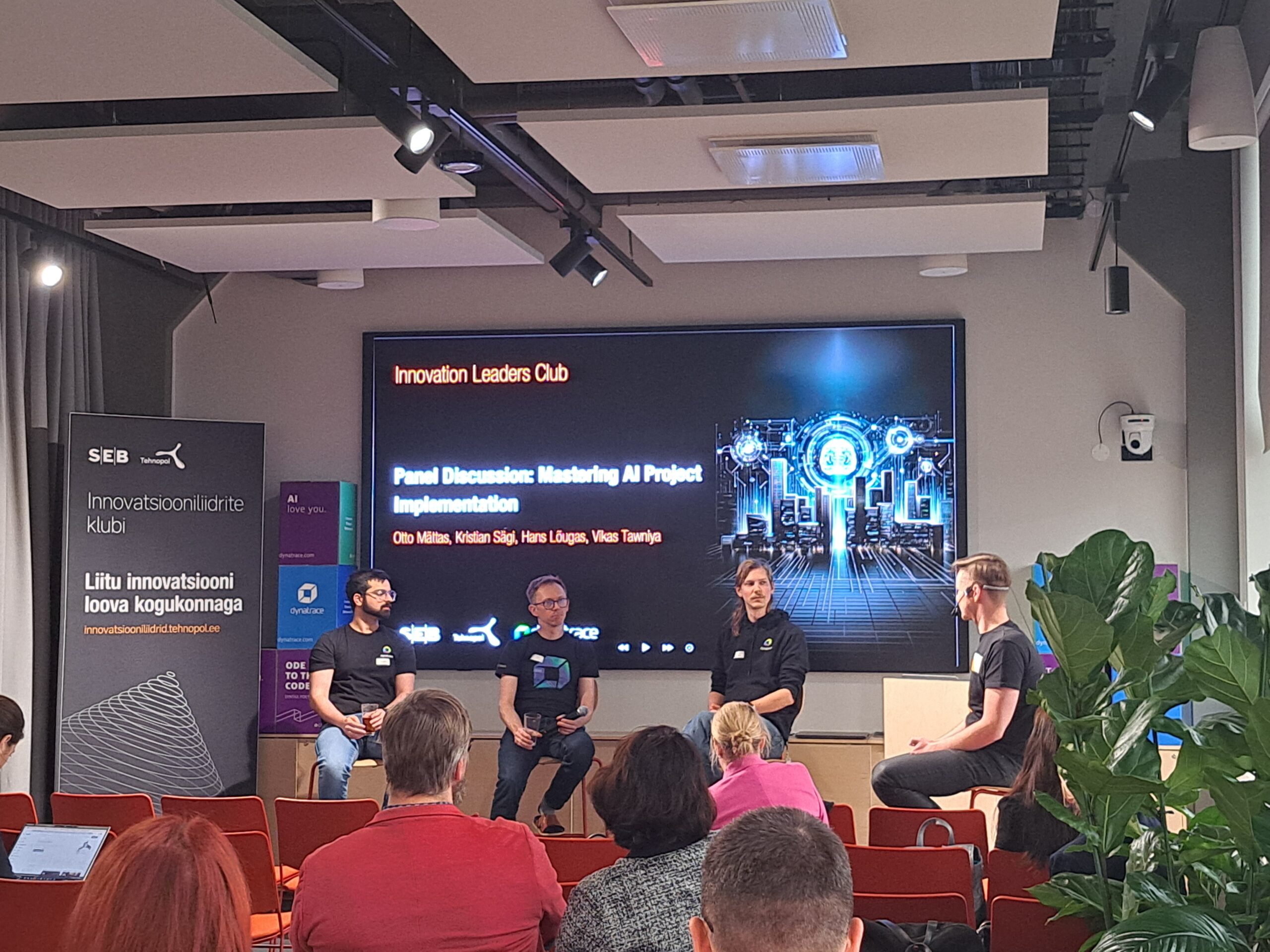The vast opportunities offered by AI – empowering companies with artificial intelligence, best practices by Dynatrace
The fourth season of the Innovation Leaders Club continues with full speed, and with that regard the members gathered for the first event of the new year. This event was especially exciting, as we met up at Dynatrace premises, where the club members had the exclusive opportunity to be early-access guests. The topic of focus was AI and its ability to empower companies.
Many have already implemented AI strategies and are using various AI tools in their everyday work, but some need additional reassurance or understanding what and how it can be done. The event was opened with an overview by Otto Mättas, who is an AI-architect and mentor, followed by Dynatrace’s stellar team members Kristian Sägi, Hans Lõugas and Vikas Tawniya, who shared insights from their development processes and AI-related systems.
We need to focus more on the positive impacts of AI

Mättas led the way to the topic of AI by asking the audience some intriguing questions – what does AI really stand for? What does AI mean for their businesses and companies? What can be expected from the future?
He emphasised that AI is often depicted in a negative sense, as popular fiction has pictured it through catastrophising. The reality is rather that AI offers great tools for complementation, not substitution. Mättas brought out different categories of AI, some being developments for specific tasks, and newer technologies that bring AI into the perspective on a broader spectrum. A lot of hesitance for companies and its people come from the often misinterpreted notion of AI replacing the workforce, when actually it is best utilized as a complementing “talent”, helping companies grow faster.
Mättas summarized that we should embrace AI instead of fearing it. “AI is not a tool that can solve everything, but it certainly can add value to your business,” he added and encouraged companies to innovate together with AI. 
Dynatrace – supporting businesses in their everyday processes
The day continued with the introduction of Dynatrace by Kristian Sägi, who is the Lab Lead and Dircetor of Software Development in Tallinn. Dynatrace was established in 2005 and has more than 4000 employees in over 60 locations. The company focuses on making sure that all the systems of their clients are working, while being behind the scene – he brought a humorous example of flight ticket booking, as anyone with a good experience of the process is probably using a system overseen by Dynatrace.
A more in-depth introduction of Dynatrace’s products and tools was continued by Hans Lõugas (Product Manager) and Vikas Tawniya (Senior Software Engineer), who gave a comprehensive overview. Lõugas stated that the problem is simple – the world is complex – and it is essentially about the ever-growing amount of data that is being generated. He added that the clients claim not the amount of data to be the problem, rather the complexity of managing and using their data – it is necessary to start by getting a sense of what is wrong, what is the problem and how to solve it, how to get in and observe all the data. Lõugas added that they understand that data handling is a headache for companies – how to store it, keep it up to date, retain it, manage the surrounding infrastructure and many more aspects.
Dynatrace offers inclusive tools and platforms for companies to register, administer and store data, and with their newest evolved technologies not only are questions answered based on the data, in addition, processes can be automated in several different ways. Their toolbox includes such technologies as DavisAI, Smartscape, Grail and many more.
In the spirit of the topic of the day, the duo gave an overview of Dynatrace’s AI modules, such as DavisAI – a hypermodal solution that can be used for observing processes, analyzing data and many other advanced technical processes. “We are in the business of “our customers’ software needs to work perfectly”,” Lõugas described. “If you think about AI applicability for your company, think about the actual business you are in and go from there.” Dynatrace aims to combine different types of AI tools with their hypermodal approach.

Choosing to use AI tools starts with the “why”
The panel discussion invited together all the expert presenters from the day, moderated by Otto Mättas, and it started off with an interesting question from the audience – by what year would there be more AI generated texts in the web than of human origin? The panelists elaborated that it is already difficult to be certain which materials are AI and which are human-originated, and distinguishing the two is quite challenging for any user. “We also have to really get an understanding of how humans themselves generate content,” Mättas added a philosophical elaboration.
The panel explored perspectives of Dynatrace on how their people see the implementation of AI for existing systems, whether business or technological. Tawniya specified that Dynatrace does not build tailored AI tools as such, rather companies can use their tools that have advanced to combine AI modules in them. Lõugas added that a lot of confusion for integrating AI stems from companies that use AI components as terms for advertisement, which creates unnecessary confusion in the field of AI.
The topic of sustainability is an often-overlooked part of AI tools and their usage. Mättas elaborated on how a tremendous amount of data garbage is being generated with the most seemingly little actions, such as asking a trivial question from ChatGPT or just saving a photo from the internet. It inevitably impacts energy usage levels all over the world, so he encouraged everyone to be mindful of their digital footprint.
The discussion also touched on the topic of generative AI and its possibilities. The panelists agreed that it is definitely an exciting topic among AI users, as it creates content which seems natural to humans, but it definitely is not a silver bullet nor a “one size fits all” approach. Lõugas emphasized that the use of AI tools has to start with the “why” – why might a company need AI tools, which processes it needs it for and what is the intended goal for use, etc – only then the true value of AI can present itself to businesses and companies using it. Mättas added that a company’s journey with AI does not need to involve a big team – it all starts with one person, helping you to take the first step, as he encouraged to contact AI specialists and mentors and take the leap.


